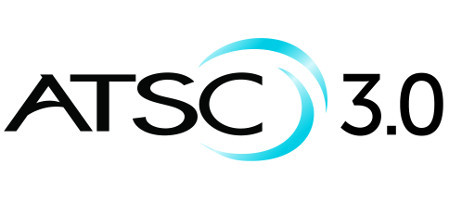ATSC 3.0 Rollout Can Begin Next Month
WASHINGTON—Broadcasters will soon get the green flag on their race to an interactive, geo-targeted, video-on-demand future. The FCC's framework for rolling out a new ATSC 3.0 advanced television transmission standard will become effective the first week in March.

The Federal Register signaled Thursday, Feb. 1, that the final rule for allowing broadcasters to roll out the standard on a "market-driven, voluntary basis" will publish Feb. 2, with the rule going into effect 30 days after that, according to the FCC.
The new standard, which was championed by broadcasters, emergency alert groups and the Consumer Technology Association, is expected to drive sales of the 4K TV's whose higher-resolution pictures can be delivered by the new standard, and give broadcasters a competitive foothold in the interactive, targeted advertising, IP world.
Read Also: Dallas Getting Single Frequency Network for ATSC 3.0 Deployment
A politically divided FCC voted 3-2 on Nov. 16 to allow for the voluntary rollout of the standard. That came over the objections of Democrats on the commission and in Congress, who argued that it was a gift to Sinclair or a rush to a standard that could leave viewers paying for the change through new TV's or equipment of higher cable prices.
ATSC 3.0 will allow TV stations to do geo-targeted ads and emergency alerts, video on demand and other interactive services using a broadband return path for viewers with Internet access, and provide those high-high definition 4K pictures.
While most of the rule will become effective in early March, three portions will not because they require information collection, which must first get the OK of the Office of Management and Budget per the Paperwork Reduction Act, which requires new regs that entail new information collection to be vetted to make sure those are not overly burdensome.
Get the TV Tech Newsletter
The professional video industry's #1 source for news, trends and product and tech information. Sign up below.
So, the portions of the rule that will not become effective until OMB signs off on their info collection (and that sign-off is also published in the Register) are those dealing with simulcasting agreements between stations (sections 73.3801, 73.6029, 74.782)
As part of the rule, stations in a market that want to roll out the transmission standard can join forces (a kind of Jack Spratt arrangement(, with one transmitting both station's signals in ATSC 3.0, and the other both signals in the current ATSC 1. format--ATSC 3.0 is not backward compatible (it requires a new set or adaptor), so the FCC wants to make sure that, for at least the first few years of the rollout--signals are available in both formats.
Read Also: CES 2018: ATSC 3.0 'Coming of Age' Celebrated
Broadcasters will have a chance to make a case for flash-cutting to ATSC 3.0 rather than simulcasting, and Low Power TV's will be allowed to flash cut without simulcasting. MVPDs must continue to carry ATSC signals but don't have to carry the new 3.0 signals. Broadcasters can combine retrans negotiations for new ATSC 3.0 and existing 1.0 signals, which cable operators had opposed.
National Association of Broadcasters President Gordon Smith said following the November vote: “Two decades ago, the FCC blessed the transition from analog to digital television, which ushered in the broadcast-led era of HDTV that dazzled consumers and was the envy of the technology world. Today, the Commissioner endorses Next Gen TV, which marks the beginning of a reinvention of free and local broadcast television in America.”
"ATSC 3.0 will deliver advanced emergency warnings and market-driven flexibility, so consumers can be safer and enjoy the highest-quality, most innovative over-the-air TV experience ever," CTA President Gary Shapiro has said of the new standard.
This story first appeared on TVT's sister publication Multichannel News.
For a comprehensive list of TV Technology’s ATSC 3.0 coverage, see our ATSC3 silo.
Contributing editor John Eggerton has been an editor and/or writer on media regulation, legislation and policy for over four decades, including covering the FCC, FTC, Congress, the major media trade associations, and the federal courts. In addition to Multichannel News and Broadcasting + Cable, his work has appeared in Radio World, TV Tech, TV Fax, This Week in Consumer Electronics, Variety and the Encyclopedia Britannica.

